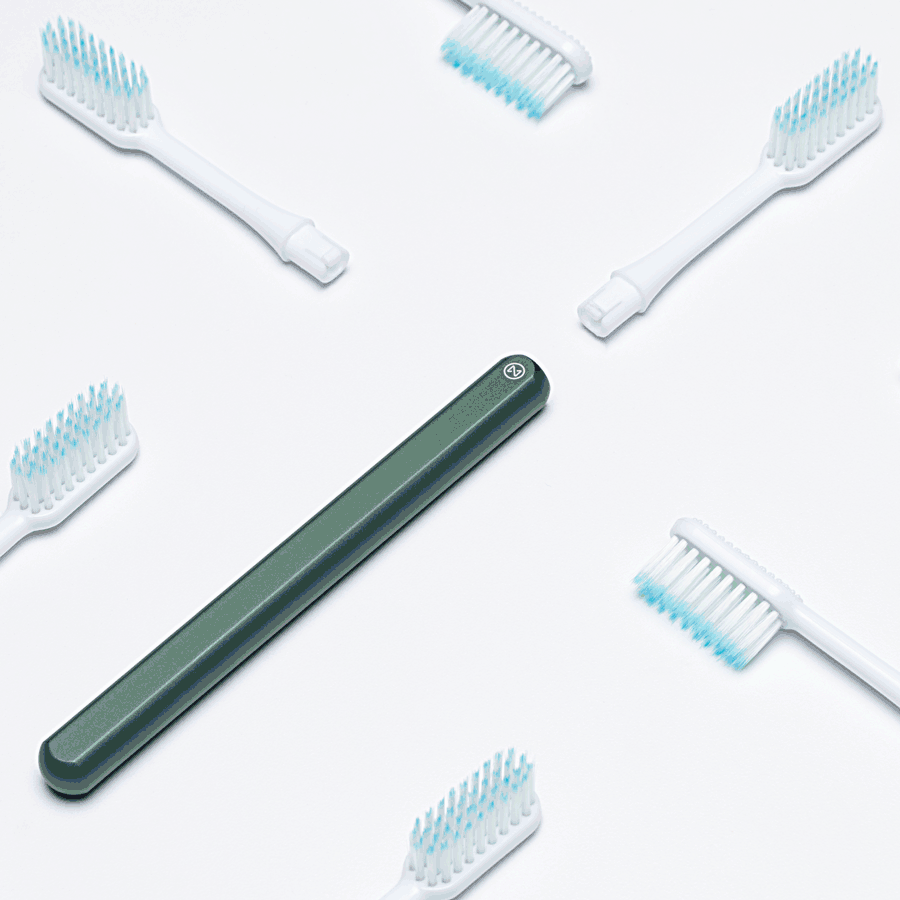In today's world, where environmental concerns are at the forefront of consumer consciousness, innovative product design and manufacturing approaches are becoming increasingly crucial. One such approach that's gaining traction is closed loop design. This concept is not just changing the way we think about product life cycles but also paving the way for a more sustainable future. At the forefront of this movement is Nada, a company reimagining the toothbrush through the lens of closed loop design.
What is Closed Loop Design
Closed loop design, also known as circular design, is a regenerative approach to product creation that aims to eliminate waste and maximize resource efficiency. Unlike the traditional linear "take-make-dispose" model, closed loop design focuses on creating products that can be reused, repaired, or recycled, thus "closing the loop" on the product life cycle.
Key principles of closed loop design include:
- Designing out waste and pollution
- Keeping products and materials in use
- Regenerating natural systems
By adhering to these principles, companies can significantly reduce their environmental impact while often discovering new avenues for innovation and cost savings.
The Value of Closed Loop Design
The benefits of closed loop design extend far beyond environmental considerations. Here are some key advantages:
Environmental Impact
By designing products with their entire lifecycle in mind, closed loop design significantly reduces waste, conserves resources, and minimizes pollution. This approach helps combat climate change and preserves ecosystems.
Economic Benefits
Closed loop design can lead to substantial cost savings for businesses. By reclaiming and reusing materials, companies can reduce their reliance on raw materials and lower production costs.
Innovation Driver
The constraints imposed by closed loop design often lead to creative solutions and technological advancements. This drives innovation across industries and can result in superior products.
Brand Reputation
As consumers become more environmentally conscious, brands that embrace closed loop design can enhance their reputation and appeal to a growing market of eco-friendly consumers.
Nada Toothbrush: A Shining Example of Closed Loop Design
Enter Nada, a company applying the principles of closed loop design to one of the most ubiquitous household items: the toothbrush. Nada's approach demonstrates how even simple products can be reimagined to have a profound environmental impact.
The Nada Difference
Traditional toothbrushes contribute significantly to plastic waste, with billions ending up in landfills and oceans each year. Nada's toothbrush tackles this problem head-on through several key features:
- Durable Design: Made from high-quality, long-lasting materials, Nada toothbrushes are designed to withstand extended use. The handle is made with highly durable aluminum designed to last a lifetime.
- Replaceable Heads: Instead of discarding the entire toothbrush, users only need to replace the brush head, significantly reducing plastic waste.
- Recyclable Materials: Both the handle and brush heads are made from recyclable materials, ensuring that even at the end of their life, they don't contribute to landfill waste.
- Take-Back Program: Nada implements a comprehensive recycling program, allowing customers to return used brush heads for proper recycling.
Closing the Loop
Nada's approach exemplifies closed loop design by:
- Minimizing waste through durable construction and replaceable parts
- Using recyclable materials to ensure resources can be reclaimed
- Implementing a take-back program to facilitate proper recycling
- Educating consumers about sustainable practices
By reimagining the toothbrush, Nada demonstrates that closed loop design can be applied to even the most commonplace items, making a significant cumulative impact on waste reduction.
The Future of Closed Loop Design
As companies like Nada lead the way, closed loop design is poised to become the new standard in product development. This shift promises a future where products are not just consumed and discarded, but part of a continuous cycle of use and regeneration.
For consumers, embracing products born from closed loop design, like the Nada toothbrush, represents a simple yet powerful way to contribute to a more sustainable future. It's a testament to the fact that even small changes in our daily habits can, collectively, make a significant difference.
As we move forward, the value of closed loop design will only increase. It offers a blueprint for how we can continue to enjoy the products we need while dramatically reducing our impact on the planet. The revolution is here, and it's starting with something as simple as a toothbrush.




